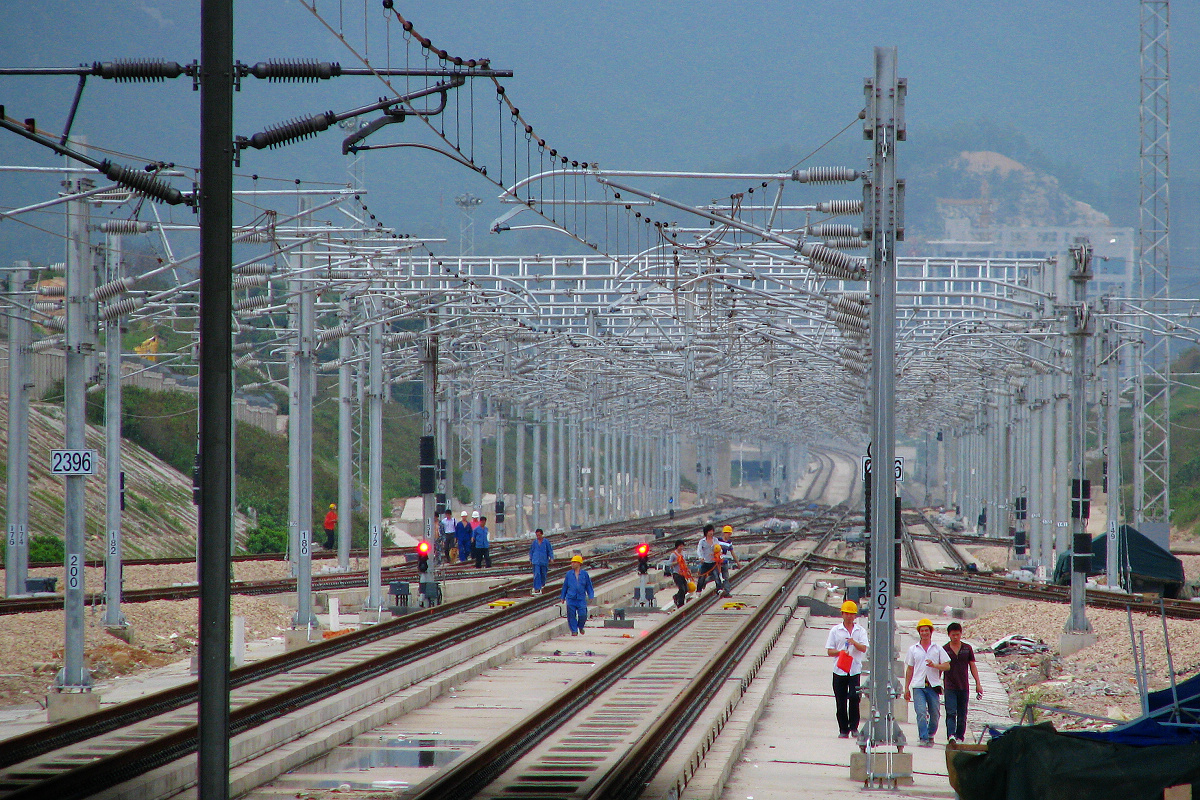The nuclear phase-out is undermining Taiwan’s energy security, but it may be politically difficult for the DPP to change course.
Right after the Democratic Progressive Party (DPP) administration came to power in Taiwan in 2016, it began pursuing its energy transition vision: increasing the share of renewable energy, expanding the use of LNG, and cutting off coal-fired power. These became part of a DPP guiding principle – a “nuclear-free homeland” – that had been embedded in the party’s platform since 1999.
By the numbers, the DPP’s 2025 vision for Taiwan’s energy mix looks as follows: 50 percent gas power, 30 percent coal, and the remaining 20 percent made up of renewables. However, given long-term trends in Taiwan’s energy consumption and electricity generation, this vision may very well fall short of its aims.
Beginning in 2023, just a year before the end of the current government’s tenure, the Legislative Yuan passed the Climate Change Response Act, which makes the 2050 net zero goal a legislative obligation, therefore crossing the declarative threshold and moving to legal regulation. Yet little else has been done in Taiwan since 2016 to take concrete steps and move away from its fossil fuels-dominated energy mix. On the contrary, the government has revised down its 2025 renewable target, announced by President Tsai Ing-wen back in 2016), down to 15 percent and decided to phase out all remaining nuclear power plants by no later than 2025, becoming the only country in Asia to follow the German “Energiewende” model – i.e. transition to a low carbon energy mix dominated by renewables and supplemented by natural gas and alternative fuels.
The Climate Change Response Act envisions the successive introduction of carbon fees and carbon tariffs on imports of carbon-intensive products. These revenues are planned to be allocated to a Greenhouse Gas Management Fund which would eventually be used to finance low-carbon technologies and green policy-related expenditures. Such measures are embedded in broader fiscal and tax reform, thus take time and leave little chances for follow up during the current administration, since most of the political capital is focused on the upcoming January 2024 general and presidential elections. In addition, the government aims to develop supplementary regulatory targets on a five-year cycle, but their materialization before 2024 also seems rather slippery. Thus, until the new regulations are rolled out and approved, Taiwan’s energy security will remain precarious, and the question persists as to how exactly the government hopes to achieve the 2050 net zero target.
As seen from the figures below, the current energy mix of Taiwan (regarding electricity consumption and primary energy supply) remains dominated by oil, coal, and natural gas, while nuclear and renewables (water included) contribute only marginally. Furthermore, the share of renewables on the electricity consumption between 2016-2022 grew only 4 percent, or 0.7 percent per year.
Taiwan’s high reliance on oil, coal, and gas is caused by the island’s physical characteristics and geopolitical imperatives, which are both to some extent very similar to those of Japan and South Korea, as well as public preferences.
Firstly, Taiwan is an island with no energy interconnections (either submarine power cables or pipelines) to neighboring countries. It is poorly endowed with indigenous natural energy resources and thus produces only a negligible share of its fossil fuel consumption. Taiwan halted coal mining in 2001, possesses no oil reserves, and produces only a tiny fraction of its natural gas needs, accounting to less than 0.9 percent of its consumption.
Taiwan imports nearly all of its required energy (98 percent) and would find itself in an uncomfortable position if a disruption of supply lanes or a blockade occurred. This scenario cannot be ruled out, taking into account the recent downturn in cross-Strait relations accompanied by the PRC’s intensified military activities in the Strait and Xi Jinping’s stated ambition to unify Taiwan with the Chinese mainland.
Taiwan also has inadequate water reserves, and a relatively small and densely populated area covered by high terrain in the middle, which make it unsuitable for large-scale development of renewables. Conclusively, and contrary to Japan and South Korea, these aspects are topped off by the substantial public opposition to nuclear power (but also other renewable onshore projects) which concluded in a civic referendum in 2021 that called for the government to halt the construction of future nuclear power plants.
High import dependency is coupled with another pressing issue: security stockpiles. Security stockpiles of natural gas were set for eight days in 2022 with an additional increase to 11 days by 2025 and 14 days by 2027. Oil refinery operators and importers have to maintain stockpiles for a minimum 60 days of supply and government security stockpiles are set for a minimum 30 days. Although in line with the International Energy Agency (EIA)’s requirements for oil stock levels (even though Taiwan is not a member), Taiwan’s current security stockpiles of oil and, especially, natural gas seem rather weak considering the extent of reliance on fossil fuels for energy use and electricity generation.
Furthermore, the use of fuel for military purposes, if any confrontation with the PRC occurs, would substantially exceed standard domestic consumption. South Korea and Japan, for example, maintain joint stockpiling regimes with Middle Eastern oil producers – a kind of emergency management regime that gives them priority rights to purchase oil, which is stored in the importing country but owned by the exporting country, in critical situations. Exploring such regimes would require Taiwan to consider expanding pragmatic ties with Gulf states which are its top oil exporters.
Moving from physical and social factors to the economy, an uninterrupted and reliable supply of energy commodities and the ability to ensure stable power generation is a vital input to future growth. It is even more critical for an economy which is energy intensive, as is the case in Taiwan. Industry accounts for more than one-third of all energy requirements and at the same time forms the keystone of its economic output and global prominence. The semiconductor industry alone constitutes 15 percent of Taiwan’s GDP, and 38.4 percent of overall exports, rising for a seventh consecutive year. Moreover, in a global context, Taiwan manufactures around 65 percent of the world’s semiconductors and more than 90 percent of its most advanced chips, which gives Taipei a unique role and importance on the international stage.
Threatening this position by inefficient (and further undermining) energy security policies could have not only socio-economic but also grave security implications for the island, given that its economic uniqueness constitutes one of its best playing cards in relation to democratic allies as well as vis-à-vis growing Chinese assertiveness. Data from our EU-TW Relations Tracker moreover show that cooperation in semiconductors is the cornerstone of Taiwan’s warming relations with the European Union, and Central and Eastern Europe in particular.
Given the slow progress in reducing its reliance on coal, oil, and natural gas coupled with rising prices for electricity, Taiwan may find it difficult to meet its net-zero target by 2050, being rather somewhere closer to the 2025 goal by mid-century.
The decision to phase-out nuclear power does not reflect Taiwan’s capabilities, whether its isolated grid network, lack of indigenous (fossil) energy sources, structure of the economy, nor (very contradicting) public opinions. Rather it implies continuous dependence on fossil fuels and other challenges stemming from the planned increase in renewables utilization. These include building storage capacities or the need to modernize electricity infrastructure so that it can absorb the intended amount of intermittent electricity in the grid. The latter need is even further emphasized by the fact that Taiwan is experiencing increasingly frequent blackouts due to defects in transmission lines and transformers.
Moreover, concerning natural gas, the rising prices of traditional fuels on the international market as a consequence of the COVID-19 pandemic and subsequent Russian invasion of Ukraine entail spending a significant amount of state revenues on energy subsidies. Not to mention that removing these subsidies, in an environment where other additional carbon fees and taxes are instituted, will pose another challenge for the government.
Re-considering Taiwan’s nuclear policy would help to diversify its energy portfolio, limit possible risks, and secure the island with low-emitting and reliable base load source with (overall) cheap and non-volatile prices for its rising electricity needs (1.4 percent year-on-year growth for the past decade).
The heritage of the DPP’s energy policies include a set of significant challenges lying ahead: ambitious net zero targets, increased anti-nuclear sentiments, and an energy mix still heavily reliant on fossil fuels, which are almost entirely imported (via the disputed South China Sea). Energy security in Taiwan lacks a more pragmatic approach and a critical revision of its energy strategy. Since it would be a grave loss of face for the currently ruling cabinet to admit that the nuclear phase-out is undermining Taiwan’s energy security and exposes the island to greater vulnerabilities, a possible momentum for re-opening discussion on revision of its nuclear phase-out policy (and energy strategy generally) could come about, especially, if the Kuomintang and/or Taiwan People’s Party secure a majority in the 2024 general elections. That effort would be boosted if blackouts, rising electricity bills, surging domestic demand, or tensions in the Taiwan Strait continue. Nevertheless, given the recent poll results, which favor DPP, any change in Taiwan’s current energy trajectory remains rather far-fetched.
The article was originally published by The Diplomat.







